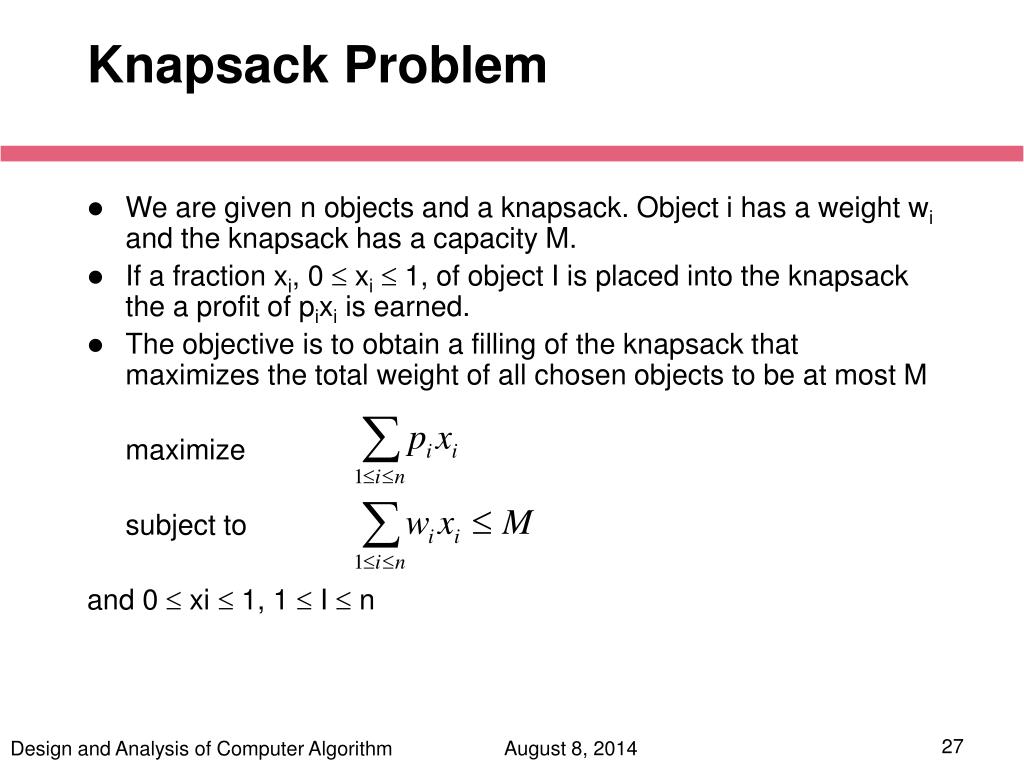
The accepted answer doesn't provide a counterexample for option 1 see 2 knapsacks with same capacity - Why can't we just find the max-value twice for that. However, I'm having a hard time finding counterexamples showing that options 1 through 3 are incorrect. This, this and this post present solutions to the problem. The correct answer to this question is option 4. The optimal solution for the given knapsack problem when W 5 is to pick items 1, 2, and 3 with a total value of 21. , which is 0-1 knapsack problem for one bag. The "algorithm from lecture" is on YouTube. Neither algorithm is guaranteed to produce an optimal feasible

Optimal feasible solution to the original problem but algorithm (1) is Produce an optimal feasible solution to the original problem butĪlgorithm (2) is guaranteed to produce an Which of the following statements is true?Īlgorithm (1) is guaranteed to produce an optimal feasible solution to the original problem provided 𝑊1=𝑊2. Two sets 𝑆1+𝑆2 that have size at most 𝑊1 and 𝑊2, respectively. The reason why knapsack systems are pertinent is because. For our purposes, we will mainly be concerned with its application in cryptography. There are several variations of the knapsack problem that are relevant in the fields of complexity theory, applied mathematics and cryptography. (2) Use the algorithm from lecture to pick a max-value feasible solution for a knapsack with capacity 𝑊1+𝑊2, and then split the chosen items into If we have n items and m knapsacks with capacities, we get the multiple knapsack problem : As a special case of the multiple knapsack problem, when the profits are equal to weights and all bins have the same capacity, we can have multiple subset sum problem. The Knapsack Problem Description of the knapsack problem.

(1) Use the algorithm from lecture to pick a max-value feasible solution 𝑆1 for the first knapsack, and then run it again on the remaining items to pick a max-value feasible solution 𝑆2 for the second knapsack. Consider the following two algorithmic approaches. Assume that every item fits in either knapsack. Pick subsets 𝑆1,𝑆2 with maximum total value such that the total weights of 𝑆1 and 𝑆1 are at most 𝑊1 and 𝑊2, respectively. 𝑛 items with positive values and positive integer weights. In the supermarket there are n packages (n 100) the package i has weight W i 100 and value V i 100. Knapsacks, with integer capacities 𝑊1 and 𝑊2. Knapsack Problem algorithm is a very helpful problem in combinatorics. I came across the following question in this course:Ĭonsider a variation of the Knapsack problem where we have two


 0 kommentar(er)
0 kommentar(er)
